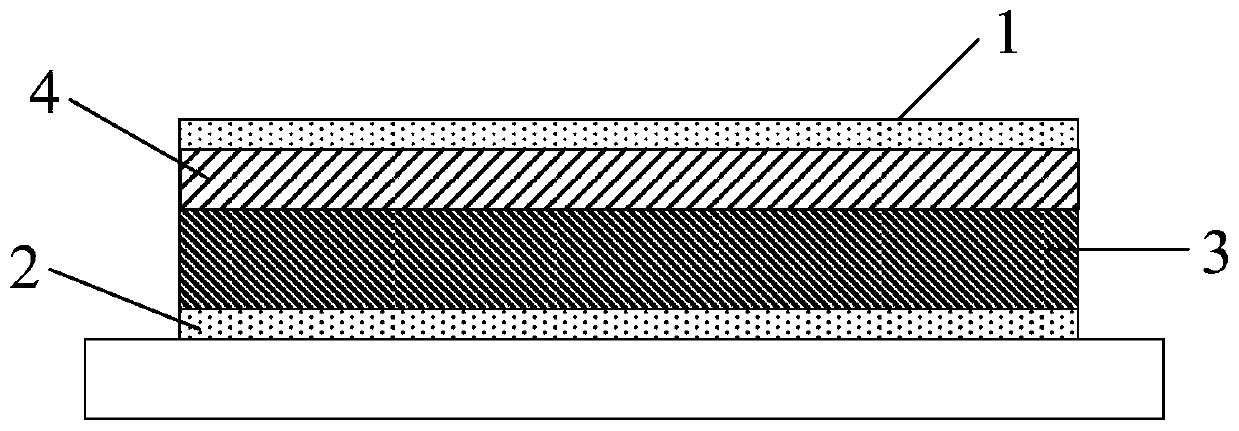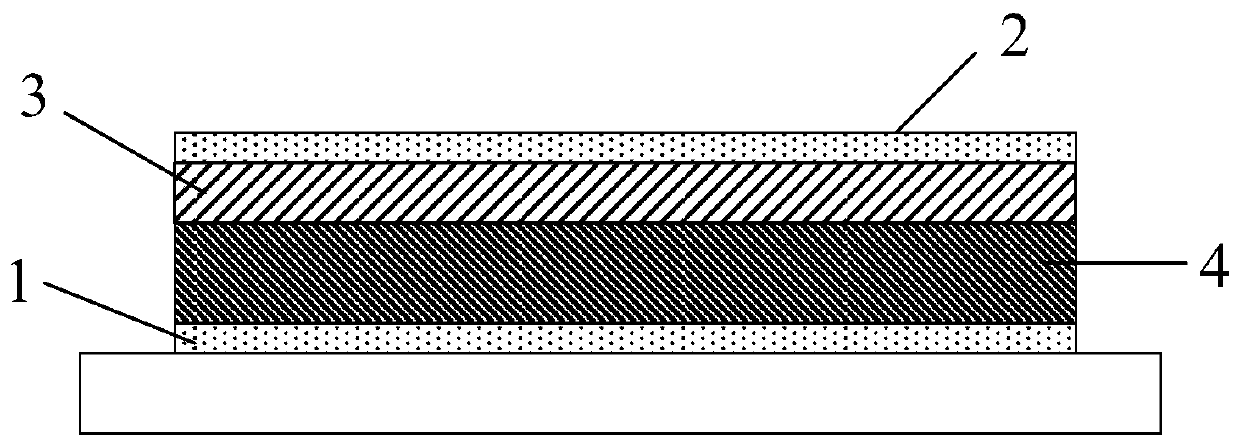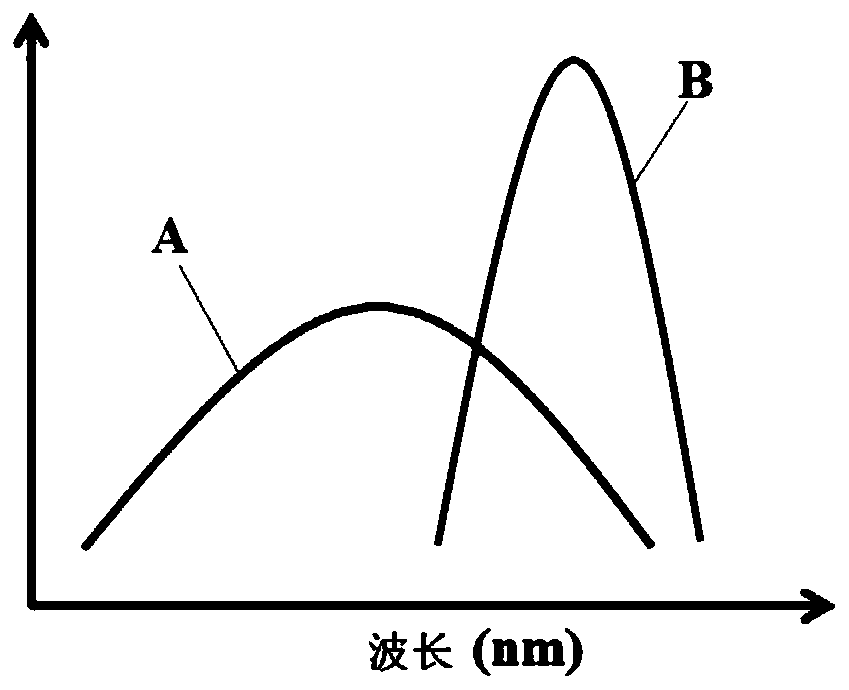Organic electroluminescent device, display substrate and display device
An electroluminescent device and electroluminescent technology, which is applied in the direction of organic semiconductor devices, electro-solid devices, electrical components, etc., can solve the problems of high power consumption of OLED, high device driving voltage and low efficiency, etc.
- Summary
- Abstract
- Description
- Claims
- Application Information
AI Technical Summary
Problems solved by technology
Method used
Image
Examples
Embodiment 1
[0029] This embodiment provides an organic electroluminescent device, such as figure 1 As shown, it includes a first electrode 1, a second electrode 2, and a light-emitting layer 3 disposed between the first electrode 1 and the second electrode 2; a space is provided between the first electrode 1 and the light-emitting layer 3 The hole transport layer 4, the hole transport layer 4 includes a hole transport material and a P-type dopant material; wherein, the electrons of the highest occupied molecular orbital (HOMO) of the P-type dopant material can be excited by light, Excited to the lowest unoccupied molecular orbital (LUMO) of the P-type dopant material, so that an electron transfer reaction occurs from the highest occupied molecular orbital (HOMO) of the hole transport material to the highest occupied molecular orbital (HOMO) of the P-type dopant material , to realize the injection of hole carriers from the P-type dopant material to the hole transport material.
[0030] In...
Embodiment 2
[0032] This embodiment provides an organic electroluminescent device, such as figure 2 As shown, it includes a first electrode 1, a second electrode 2, and a light-emitting layer 3 disposed between the first electrode 1 and the second electrode 2; a space is provided between the first electrode 1 and the light-emitting layer 3 The hole transport layer 4, the hole transport layer 4 includes a hole transport material and a P-type dopant material; wherein, the electrons of the highest occupied molecular orbital (HOMO) of the P-type dopant material have a wavelength of 380-780nm Under the excitation of a range of light, it is excited to the lowest unoccupied molecular orbital (LUMO) of the P-type dopant material, so that the highest occupied molecular orbital (HOMO) of the hole transport material to the highest occupied molecular orbital of the P-type dopant material (HOMO) undergoes an electron transfer reaction to realize the injection of hole carriers from the P-type dopant ma...
Embodiment 3
[0048] This embodiment provides a method for preparing the organic electroluminescent device of the above embodiment, comprising the following preparation steps:
[0049] S01. Form the first electrode; in this embodiment, the first electrode is used as an anode as an example for illustration, and the material for forming the anode may be one or a mixed alloy material of Al, Ag, Mg.
[0050] Optionally, a step of forming a pixel-defining structure may also be included, and the material of the pixel-defining structure may be selected from resin, polyimide, organic silicon or silicon dioxide. Wherein, the pixel definition structure defines a plurality of pixel units.
[0051] S02, using a hole transport material and a P-type dopant material to form a hole transport layer; wherein, the electrons of the highest occupied molecular orbital (HOMO) of the P-type dopant material can be excited to the P-type under the excitation of light The lowest unoccupied molecular orbital (LUMO) of...
PUM
 Login to View More
Login to View More Abstract
Description
Claims
Application Information
 Login to View More
Login to View More - R&D
- Intellectual Property
- Life Sciences
- Materials
- Tech Scout
- Unparalleled Data Quality
- Higher Quality Content
- 60% Fewer Hallucinations
Browse by: Latest US Patents, China's latest patents, Technical Efficacy Thesaurus, Application Domain, Technology Topic, Popular Technical Reports.
© 2025 PatSnap. All rights reserved.Legal|Privacy policy|Modern Slavery Act Transparency Statement|Sitemap|About US| Contact US: help@patsnap.com



